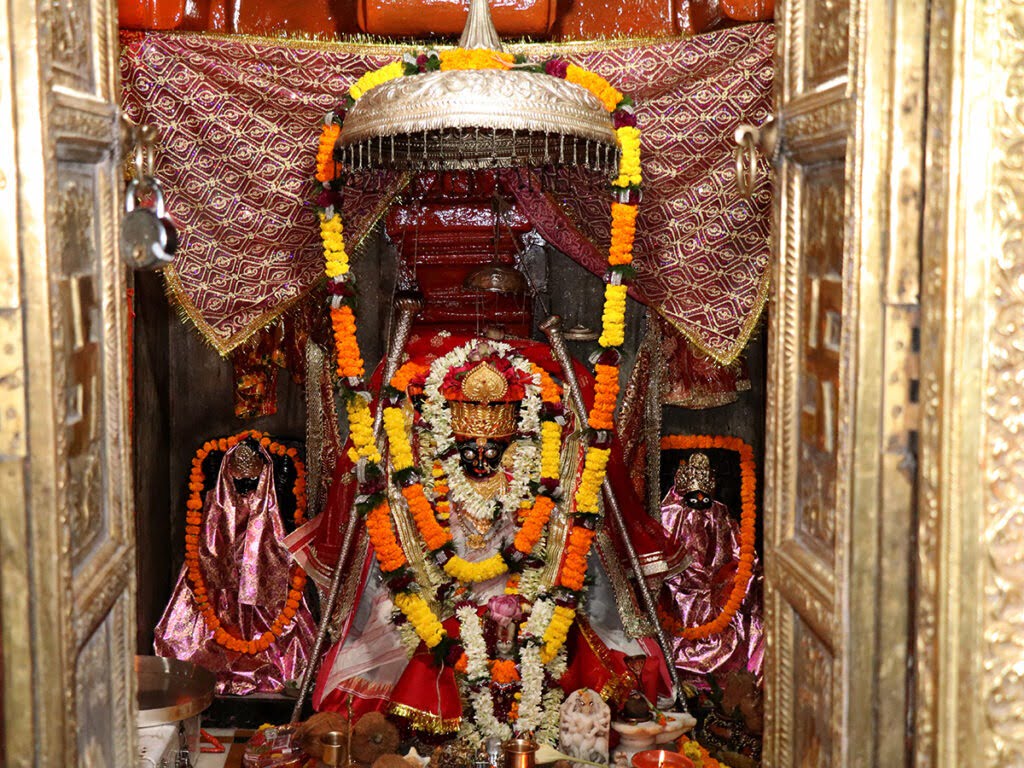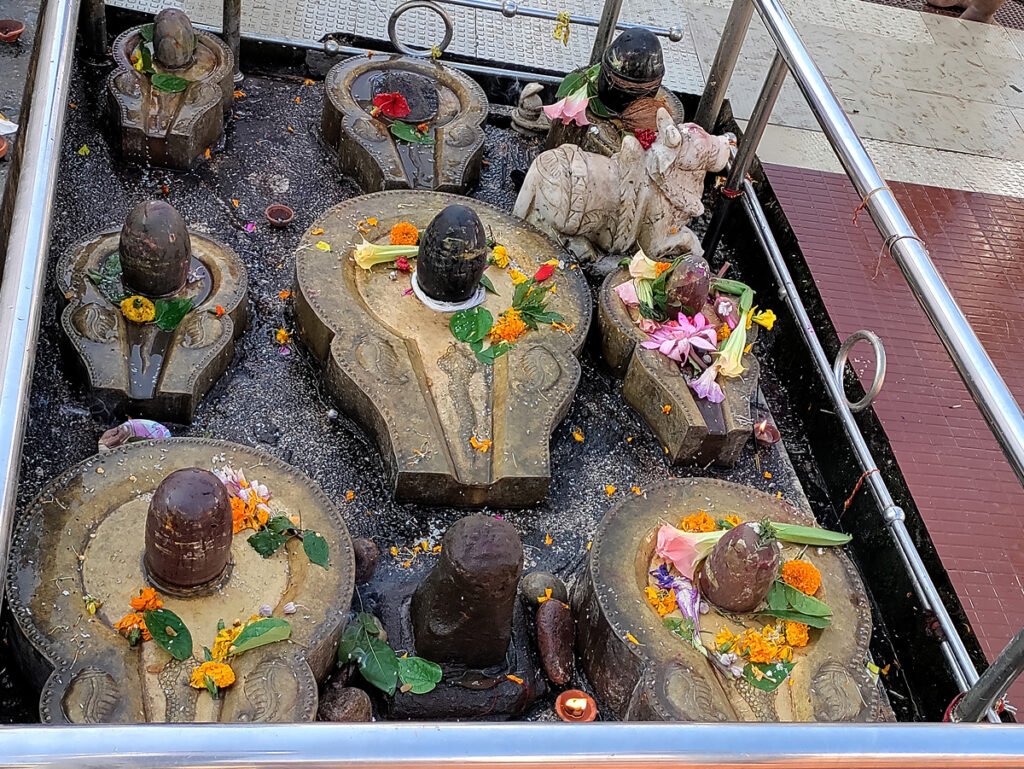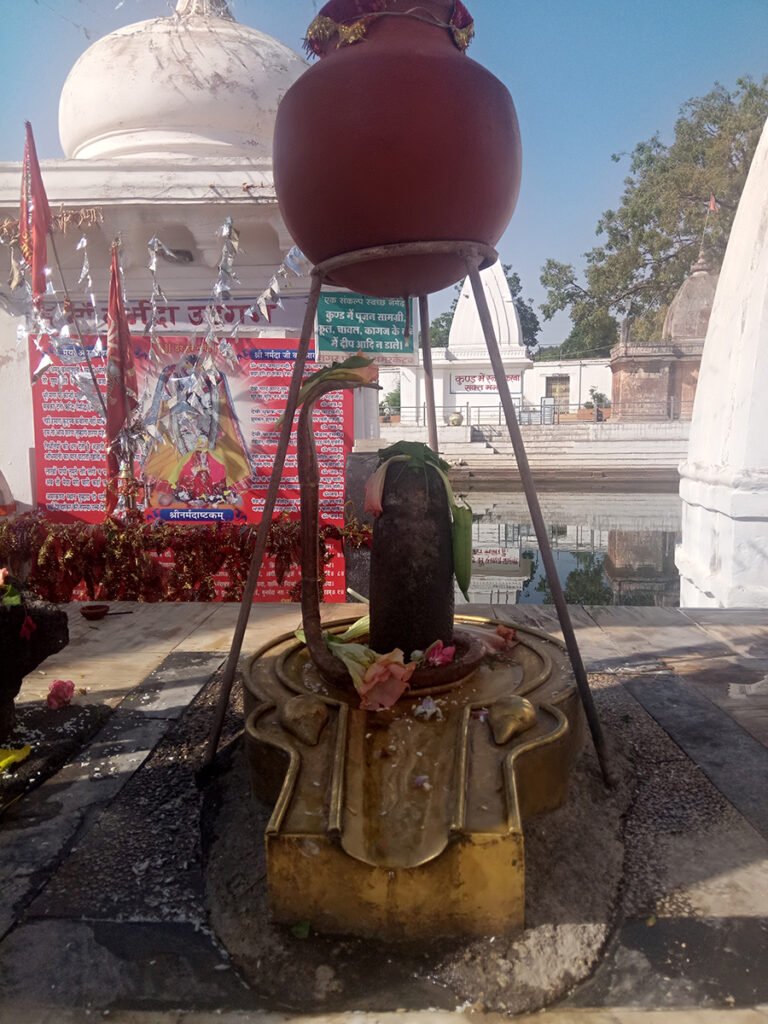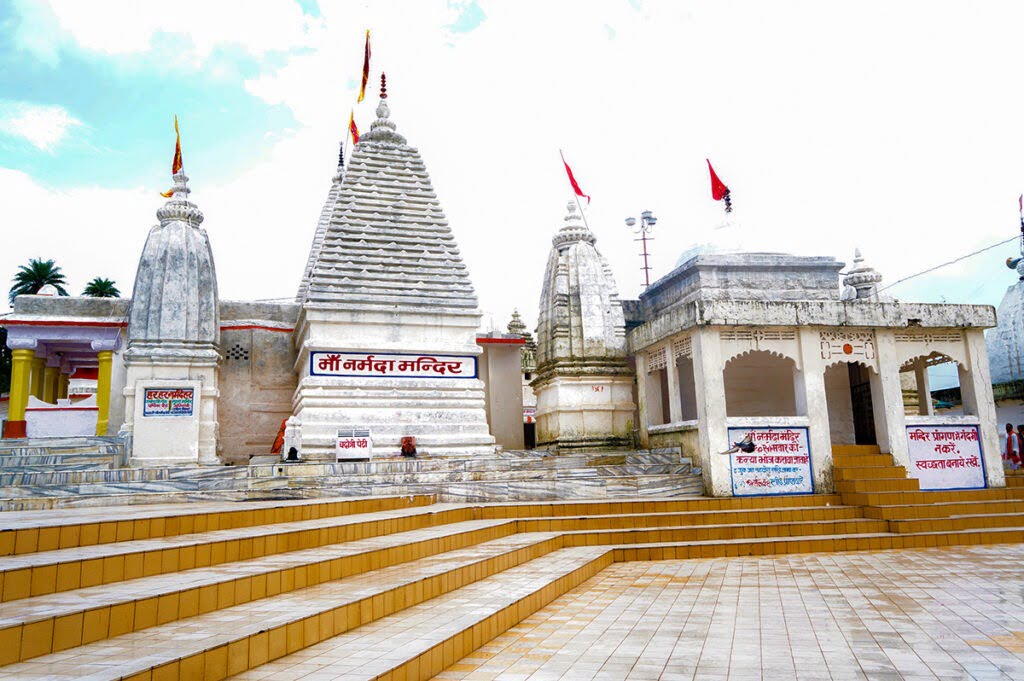Narmada Devi Shondesh Shakti Peeth
Narmada Devi Shondesh Shakti Peeth is one of the ancient temples and is believed to be 6000 years old and is considered one of the 51 Shakti Peethas which is located at Amarkantak, Anuppur District of Madhya Pradesh. Goddess is called with the name Narmada Devi and Lord Shiva as Badrasen or Vadrasen. In Sanskrit, Amarkantak means Amar – immortal and kantak – obstruction.

Contents
- 1 Significance of Narmada Devi Shondesh Shakti Peeth:
- 2 Legend of Narmada Devi Shondesh Shakti Peeth:
- 3 Rituals and Offerings at Narmada Devi Shondesh Shakti Peeth:
- 4 Places to visit near Narmada Devi Shondesh Shakti Peeth:
- 5 FAQ:
- 5.0.1 Where is Narmada Devi Shondesh Shakti Peeth located?
- 5.0.2 What is the significance of the Narmada Devi Shondesh Shakti Peeth?
- 5.0.3 How do I reach the Narmada Devi Shondesh Shakti Peeth?
- 5.0.4 Is there an entry fee to the temple?
- 5.0.5 What is the best time to visit the Narmada Shakti Peeth?
- 5.0.6 What are the temple’s opening hours?
- 5.0.7 Are there any specific dress code or guidelines for visitors?
- 5.0.8 Can non-Hindus visit the temple?
- 5.0.9 Are there facilities for food and accommodation near the temple?
- 5.0.10 Is photography allowed inside the temple?
- 6 Google Maps:
Significance of Narmada Devi Shondesh Shakti Peeth:
- According to the mythology Daksha yagna and Sati self-immolation, it is the holy place where “Right buttock” fell down.
- It is believed that Amarkantak was an abode of Gods and whoever dies here gets a place in heaven.
Legend of Narmada Devi Shondesh Shakti Peeth:
When Lord Shiva destroyed Tripura (three cities) by fire, a few ashes fell at Kailash, a few at Amarkantak, and the remaining were saved by the Lord himself in heaven. It is believed that ashes fell at Amarkantak transformed into crores of Shiv Lingas but now we are able to see only one at Jwaleshwar. Because of these holy ashes, it is believed that whoever devotee enters into Sona or Narmada Temple their souls will be cleansed.
The temple is believed to have been founded in the 10th century AD. The current temple was built in the 16th century AD. The temple is a beautiful example of Hindu architecture. It is made of white marble and has a soaring spire.
The temple is located in a beautiful setting. It is surrounded by hills and forests. The temple is also close to the source of the Narmada River.
Explore More>> Jayanthi Nartiang Durga Temple

Rituals and Offerings at Narmada Devi Shondesh Shakti Peeth:
The rituals and offerings at the Narmada Devi Shondesh Shakti Peeth are performed according to the Shakta tradition of Hinduism. The most important ritual is the Durga Puja, which is celebrated every year during the autumn months. During Durga Puja, the goddess Narmada is worshipped with offerings of flowers, fruits, and sweets. There are also special prayers and ceremonies held during this time.
Other important rituals at the Narmada Devi Shondesh Shakti Peeth include:
- Aarti: This is a ritual of worship in which the image of the goddess is offered lamps, incense, and flowers.
- Bhog: This is a ritual in which the goddess is offered food and drink.
- Prasad: This is food that has been offered to the goddess and then distributed to devotees.
Devotees of the goddess Narmada visit the Narmada Devi Shondesh Shakti Peeth to seek her blessings for health, wealth, and prosperity. They also come to the temple to seek her protection from evil forces.
Here is a more detailed description of the rituals and offerings at the Narmada Devi Shondesh Shakti Peeth:
Aarti
The aarti is performed twice a day, in the morning and evening. The aarti is led by a priest who chants mantras and waves lamps, incense, and flowers in front of the image of the goddess. Devotees sing and clap along with the priest.
Bhog
The bhog is offered to the goddess in the morning and evening. The bhog usually consists of fruits, sweets, and rice. The bhog is prepared by the temple priests and then offered to the goddess. After the bhog is offered, it is distributed to devotees.
Prasad
The prasad is food that has been offered to the goddess and then distributed to devotees. The prasad is usually a piece of fruit or a sweet. Devotees believe that the prasad is blessed by the goddess and will bring them good luck.
Durga Puja
The Durga Puja is a 10-day festival that is celebrated every year during the autumn months. The festival commemorates the victory of the goddess Durga over the demon Mahishasura. The Durga Puja at the Narmada Devi Shondesh Shakti Peeth is one of the largest and most important Durga Pujas in India.
During the Durga Puja, the temple is decorated with flowers and lights. There are also special prayers and ceremonies held. The highlight of the festival is the immersion of the idol of the goddess in the river Narmada on the 10th day.
Special offerings
In addition to the regular offerings of flowers, fruits, and sweets, devotees of the goddess Narmada also offer the following special offerings:
- Shondesh: This is a type of sweet made from milk, sugar, and nuts. Shondesh is the namesake of the temple, and is believed to be a favorite food of the goddess Narmada.
- Coconut: Coconuts are a symbol of fertility and prosperity, and are often offered to the goddess Narmada to seek her blessings for these things.
- Red cloth: Red is the color of the goddess Durga, and red cloth is often offered to her as a symbol of devotion.
Explore More>> Saptashrungi Bhadrakali Temple Nasik

Places to visit near Narmada Devi Shondesh Shakti Peeth:
Maheshwar: Maheshwar is a charming town located on the banks of the Narmada River, known for its historical architecture, including the Maheshwar Fort and numerous temples. It’s also famous for its handwoven sarees. You can take a stroll along the ghats, visit the Ahilya Fort, and explore the temples in this serene town.
Omkareshwar: Omkareshwar is one of the 12 Jyotirlinga shrines in India. It’s situated on an island in the Narmada River and is considered a highly sacred site for Lord Shiva’s devotees. You can explore the Omkareshwar Temple, Siddhanath Temple, and take a boat ride on the Narmada River.
Mandu: Mandu, also known as Mandav, is an ancient fortress town with a rich history. It’s famous for its Afghan architecture and historical monuments. Some notable attractions include the Jahaz Mahal, Rani Roopmati’s Pavilion, and the Mandu Fort.
Indore: Indore is the largest city in Madhya Pradesh and offers a mix of cultural, historical, and modern attractions. You can visit Rajwada, Lal Bagh Palace, Kanch Mandir, and try the local street food, which is famous for its variety and flavors.
Ujjain: Ujjain is another major religious city in Madhya Pradesh. It’s one of the seven Moksha-puris and is famous for the Mahakaleshwar Jyotirlinga temple. Don’t miss the Shipra River ghats and the vibrant evening aarti (prayer ceremony).
Bargi Dam: The Bargi Dam is located on the Narmada River and is a beautiful spot for boating, picnics, and birdwatching. The scenic surroundings make it an excellent place for relaxation and enjoying nature.
Bhedaghat: Bhedaghat, near Jabalpur, is known for its stunning marble rocks and the Dhuandhar Falls on the Narmada River. You can take a boat ride to appreciate the natural beauty of the area.
Pachmarhi: Pachmarhi is a hill station in the Satpura Range and offers lush green landscapes, waterfalls, and pleasant weather. It’s a great place for trekking and exploring nature.
Chausath Yogini Temple: Located in Bhedaghat, this historic temple dedicated to Goddess Durga is another interesting site to explore.
Explore More>> Biraja Temple Shakti Peeth Jaipur

FAQ:
Where is Narmada Devi Shondesh Shakti Peeth located?
The Narmada Devi Shondesh Shakti Peeth is situated near the town of Shondesh, which is in the Narmada district of Madhya Pradesh, India.
What is the significance of the Narmada Devi Shondesh Shakti Peeth?
The Narmada Shakti Peeth is one of the 51 Shakti Peethas in Hindu tradition. It is believed to be the place where the left shoulder of the Goddess Sati, a manifestation of the Divine Mother, fell after her self-immolation.
How do I reach the Narmada Devi Shondesh Shakti Peeth?
To reach the Narmada Shakti Peeth, you can travel to Jabalpur, which is a major city in Madhya Pradesh and well-connected by road and rail. From Jabalpur, you can hire a taxi or use local transportation to reach Shondesh, where the temple is located.
Is there an entry fee to the temple?
Typically, there is no entry fee to visit the temple. However, it’s always a good idea to check if there have been any changes in the temple’s policies.
What is the best time to visit the Narmada Shakti Peeth?
The temple can be visited throughout the year, but it is especially crowded during Navaratri, a major Hindu festival dedicated to the worship of the goddess. You may want to visit during the off-peak season to avoid large crowds.
What are the temple’s opening hours?
The temple’s opening hours can vary, so it’s recommended to check with the temple authorities or inquire locally for the specific timing before your visit.
Are there any specific dress code or guidelines for visitors?
While there is no strict dress code, it is advisable to dress modestly and respectfully when visiting the temple, covering your shoulders and legs. Removing your shoes before entering the temple is also a common practice.
Can non-Hindus visit the temple?
In general, non-Hindus are allowed to visit the temple. However, it’s essential to be respectful of the temple’s customs and traditions.
Are there facilities for food and accommodation near the temple?
There might be local eateries or small restaurants near the temple where you can find vegetarian meals. For accommodation, you can stay in Shondesh or nearby towns, as they may offer guesthouses or budget hotels.
Is photography allowed inside the temple?
Photography policies can vary, so it’s best to inquire with the temple authorities or local guides about whether photography is allowed inside the temple.
